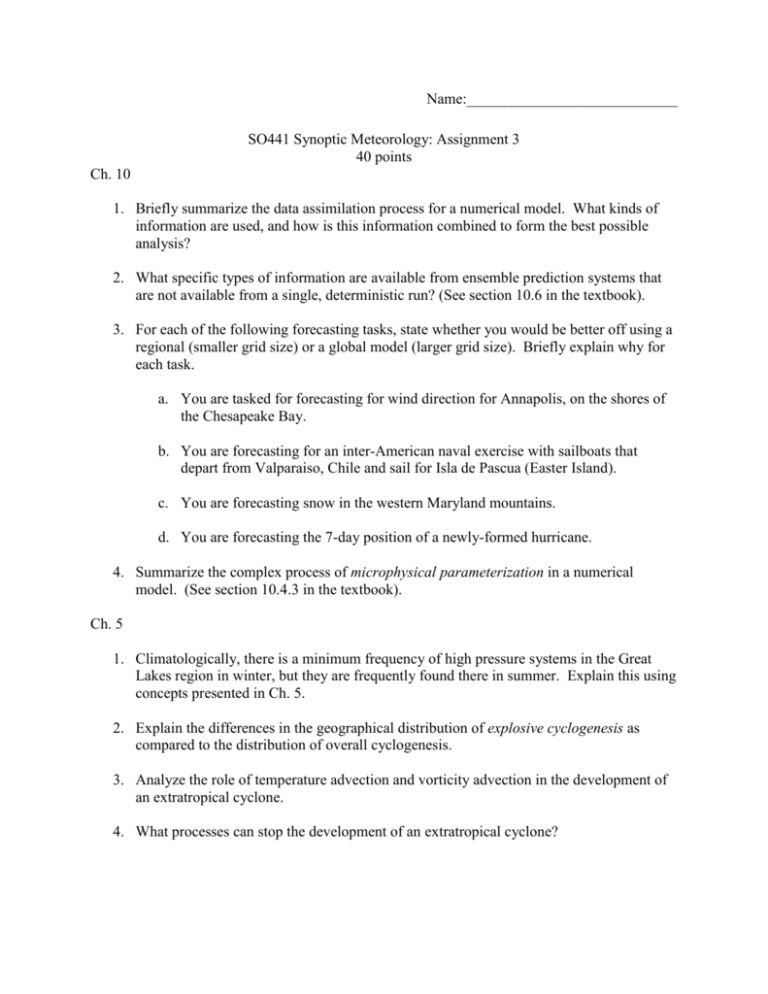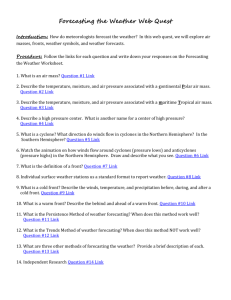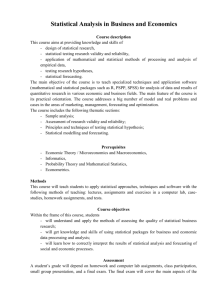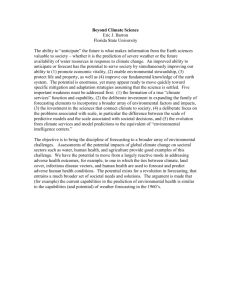Homework 3
advertisement

Name:____________________________ SO441 Synoptic Meteorology: Assignment 3 40 points Ch. 10 1. Briefly summarize the data assimilation process for a numerical model. What kinds of information are used, and how is this information combined to form the best possible analysis? 2. What specific types of information are available from ensemble prediction systems that are not available from a single, deterministic run? (See section 10.6 in the textbook). 3. For each of the following forecasting tasks, state whether you would be better off using a regional (smaller grid size) or a global model (larger grid size). Briefly explain why for each task. a. You are tasked for forecasting for wind direction for Annapolis, on the shores of the Chesapeake Bay. b. You are forecasting for an inter-American naval exercise with sailboats that depart from Valparaiso, Chile and sail for Isla de Pascua (Easter Island). c. You are forecasting snow in the western Maryland mountains. d. You are forecasting the 7-day position of a newly-formed hurricane. 4. Summarize the complex process of microphysical parameterization in a numerical model. (See section 10.4.3 in the textbook). Ch. 5 1. Climatologically, there is a minimum frequency of high pressure systems in the Great Lakes region in winter, but they are frequently found there in summer. Explain this using concepts presented in Ch. 5. 2. Explain the differences in the geographical distribution of explosive cyclogenesis as compared to the distribution of overall cyclogenesis. 3. Analyze the role of temperature advection and vorticity advection in the development of an extratropical cyclone. 4. What processes can stop the development of an extratropical cyclone?











